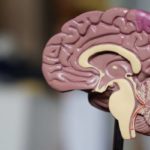1. Fewer patients in the direct thrombectomy achieved functional independence at 90 days compared to the bridging therapy group.
2. Safety outcomes such as intracerebral hemorrhage and death were similar for both groups.
Evidence Rating Level: 1 (Excellent)
Study Rundown: Current guidelines recommend the use of bridging therapy, which consists of intravenous thrombolysis before endovascular thrombectomy, for patients with large-vessel ischemic strokes. However, previous studies comparing the efficacy of intravenous thrombolytics prior to endovascular thrombectomy to direct thrombectomy have yielded conflicting results. This randomized controlled trial aimed to determine whether treatment with direct endovascular thrombectomy within 4.5 hours of stroke onset is non-inferior to bridging intravenous thrombolysis (alteplase or tenecteplase) plus thrombectomy. The primary outcome was a Modified Rankin Scale (MRS) score of 0-2 at 90 days while key secondary outcomes included functional return to baseline and patients with successful reperfusion. According to study results, more patients in the bridging therapy group achieved functional independence compared to the direct thrombectomy group. Non-inferiority of direct thrombectomy to bridging therapy could not be concluded from these results. This study was strengthened by a large sample size with individuals from various countries, thus increasing the generalizability of results.
Click to read the study in The Lancet
Relevant Reading: Endovascular Therapy for Acute Stroke with a Large Ischemic Region
In-depth [randomized-controlled trial]: From Jun 2, 2018, and Jul 8, 2021, 295 patients were enrolled from 25 acute-care hospitals in Australia, New Zealand, China, and Vietnam. Included were patients with ischemic stroke onset within 4.5 hours and no contraindication to intravenous thrombolytic therapy. Altogether, 293 patients (146 in direct thrombectomy and 147 in bridging therapy) were included in the intention-to-treat analysis.
The primary outcome of functional independence (MRS score 0-2 or return to baseline) was greater in the bridging therapy group (61%) compared to the direct thrombectomy group (55%). Non-inferiority of direct thrombectomy compared to bridging therapy could not be concluded based on these results (intention-to-treat risk difference -0.051%, two-sided 95% CI -0.160 to 0.059, predefined non-inferiority margin= -0.1%). Both groups were comparable regarding proportion of symptomatic intracerebral hemorrhage (1% each in direct vs. bridging therapy group) and death (15% in direct vs. 16% in bridging group; adjusted odds ratio [OR] 0.92, 95% confidence interval [CI] 0.46-1.84). An interaction was found between patients in Asian regions versus non-Asian regions (interaction p=0.024). Among patients in Asian regions, the primary outcome occurred in 34% of patients in the direct thrombectomy compared to 57% in the bridging therapy group (adjusted OR 0.42; 95% CI 0.21 to 0.86; p=0.017). Findings from this study do not support the use of direct thrombectomy over bridging therapy for management of acute ischemic strokes.
Image: PD
©2022 2 Minute Medicine, Inc. All rights reserved. No works may be reproduced without expressed written consent from 2 Minute Medicine, Inc. Inquire about licensing here. No article should be construed as medical advice and is not intended as such by the authors or by 2 Minute Medicine, Inc.


